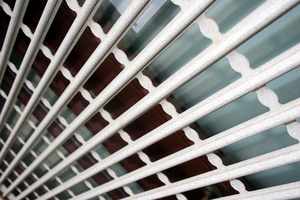This is the seventh article in the series, “Convert a Van Into a Campervan.” This article will discuss heating, ventilation, air conditioning and refrigeration.
With all the insulation, water setup and interior furnishings built, it is time to consider heating, cooling, ventilation and refrigeration. Let’s discuss these one by one.
Mounting a rooftop air conditioner is a great way to save space. Wiring for the unit is not difficult. Any RV shop or RV technician can mount one for you.
If the campervan is to be used for stealth camping, which is parking overnight on public roads, the rooftop AC is a dead giveaway for an RV. You’ll be asked to move on at the least, or get a ticket from the local police.
It is not illegal to park a passenger van beside a public road. That’s the whole basis of “stealth.” You are not doing anything illegal; you’re trying to blend in with other vehicles.
One method is to mount a small, 5,000 BTU window unit in one of the van’s windows. This may or may not raise an eyebrow or two.
Another idea comes from the Yahoo Vandwellers group. Mount the window air conditioner inside the van. This is the method to have the AC inside:
- ·.
- · Place the AC unit inside the cabinet and build a face around the front of it. There should be at least two inches of space between the AC and the cabinet walls.
- · Use spacers to raise the AC inside the cabinet at least two inches off the floor. The unit should be secured inside the cabinet so it does not move around.
- ·. Few, if any people will notice.
- · The power for the AC should come from the battery bank, not from the engine’s battery. Choose a unit that uses very low wattage.
- · The drain tube should be connected to a flexible PVC tube that runs through the floor and the outside of the van. You do not want the water dripping inside.
By parking in the shade and with the insulation you installed, it will not take much to cool the inside of the van. Be sure the van is painted a light color- this reflects heat, not absorbs it.
Heating
You can use a regular electric space heater or a 12-volt space heater to keep the van warm in the winter. Cooking indoors helps as well.
Under no circumstances should you try to use a propane heater inside an enclosed space- this allows a buildup of CO2, which will kill you.
Wearing sweaters, using a sleeping bag and perhaps an electric blanket (regular or 12-volt) will also help with heat at night.
Of course, you could follow the snowbirds to the southern states during the winter. Snowbirds are RV’ers who live in the mild climate of northern states during the spring and summer, then move south for the winter.
Ventilation
To keep the van from becoming too stuffy, ventilation is required. You can cut small ports in the side of the van and cover them with louvered RV covers. Some allow you to open or close them to allow more or less airflow.
Several models are made with small fans powered by solar panels you can mount on the roof. This will save battery power and allow for ventilation any time of year.
You can “crack a window,” but if you are in an unfamiliar area, this may not be a good idea. If the van does not have windows, you will need to add vents. You can add vents in the roof of the van, of course. These may be present in many “conversion vans” on the market today. You crank open the vent cover, and turn the vent on. These use power from the van’s batteries. You can re-route the wiring to your battery bank, or use solar power.
Refrigeration
This is as varied as vandwellers. Many begin with a “5 day ice chest.” These chests are super-insulated to keep ice frozen for up to 5 days in 90° heat. Since the inside of the van will be air conditioned, the ice may keep longer.
12-volt refrigerators are wonderful for keeping food cold. Their main drawback is their price- they are expensive, but use very little power.
Regular small refrigerators may or may not have a freezer compartment. These are very inexpensive, but not made for RV’s. You can still use one inside the campervan. It needs to be secured in place; ventilation needs to be provided for the hot air from the coils. Use the same method as for the air conditioner.
A small freezer can be used to keep a stock of food for long trips. This, too will draw on your battery bank. Like the refrigerator and the AC, it will need to be vented to the outside.
RV refrigerator fans should be used in all three installations. The best are solar powered and pull the heated air to the outside of the fan.
Parking the van so the wind hits the side opposite the devices will also help tremendously. The suction effect created from the airflow passing under, over and around the van will help pull the heated air from the devices.
You can have a heated, cool and comfortable van. Have a cold drink and freeze leftovers for later meals.
When you plan for all the appliances you will use, setting up your power needs is easy. You can start with an ice chest for cold food, use a 12-volt ice chest fan for cooling, and upgrade as funds permit. Just remember to upgrade your battery bank to handle the load.
The next article in the series will discuss internet access and mail.
Source: The author of this article has over 40 years of experience in diverse forms of DIY, home improvement and repair, crafting, designing, and building furniture, outdoor projects, RV’ing and more.


